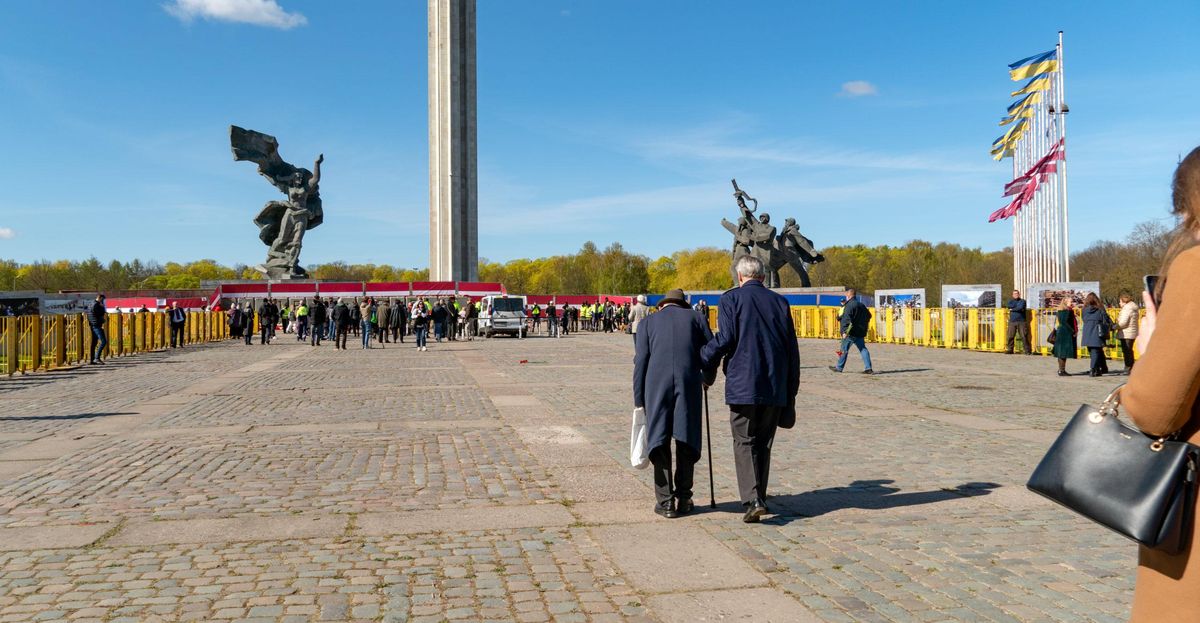Recent diplomatic tensions have arisen between Russia and Latvia, primarily revolving around Latvia’s actions against what Russia describes as its “cultural heritage.” These diplomatic spats came to the forefront after the Russian Ministry of Foreign Affairs summoned Latvia’s Charge d’Affaires Dace Rutka to voice their discontent over what they perceive as the systematic destruction of Russian historical artifacts within Latvia’s borders.
According to reports, the Russian Foreign Ministry expressed outrage, demanding accountability for actions they label as criminal. This sentiment is particularly directed at the removal of statues and memorials connected to prominent figures of Russian history, as well as the apparent trend of erasing symbols they believe belong to their cultural identity. One significant focus of this protest included the deconstruction of the statue of Prince Mikhail Andreas Barclay de Tolly, which dates back to the Russian Empire. The statue’s removal is seen by the Russian government as not just the loss of art but as an affront to their historical narrative.
The ministry’s statements characterize the actions of the Latvian authorities as vehemently Russophobic and labeled them as immoral, demonstrating just how deeply these cultural artifacts are tied to national pride and historical identity.
This incident marks only the latest episode in what has been increasingly strained relations between Russia and Baltic states. Figures such as the commander Barclay de Tolly hold significant weight, not only for their military contributions but also for the legacy they represent, merging both cultural appreciation and historical patriotism for many Russians.
The backdrop of this current spat is notable. Just last year, Latvia compiled its strategy to deal with Russian influences and sought to deepen its European Union affiliations, viewing itself as part of the West. Such political maneuvers often inflame nationalistic sentiments among Russian officials, drawing lines between heritage and modern geopolitical realities. The persistence of these tensions can be traced back to history where symbols depicted on grounds, streets, or monuments reflect broader power struggles, and the intent behind their removal is often interpreted through lenses shaped by contemporary nationalistic ideologies.
For Latvia, the decision to dismantle these statues has been framed as part of the nation’s effort to reckon with its history, particularly its ties to the Soviet past, and to carve out its identity independent from Russian influence. The local government aims to reshape public spaces to reflect contemporary values and align more closely with their European counterparts.
According to the Latvian government, the statue’s removal aligns with its commitment to creating public spaces devoid of symbols it associates with oppression and the past. Riga’s City Council approved this strategy backed by arguments emphasizing the importance of cultural sensitivity and the need for historical re-evaluation.
Disagreements over cultural heritage often extend beyond just physical artifacts. They involve passionate debates about identity, history, and the narratives nations choose to present to their citizens. These artifacts, from statues to memorials, serve not just as historical markers, but also as focal points around which collective identity is built and challenged. For Latvia, dismantling the statue is seen as breaking free from historical chains, allowing for the emergence of new narratives and commemorative practices.
Historically, the area has been defined by its diverse heritage, incorporating elements from various empires and nations. Decisions about which histories to highlight, and which symbols to preserve or remove, reflect significant changes not just within Latvia, but are also indicative of the broader geopolitical shifts post-Cold War.
With the removal of each statue or memorial, the dialogue about who controls history and how it is interpreted grows ever more pronounced. The clash over these cultural narratives is indicative of how history is not merely static but continually evolves, shaped by the perspectives of those living through it.
The Russian government’s protest speaks to the larger narrative of how cultural diplomacy and heritage preservation interact with contemporary political issues. The Russian Foreign Ministry’s insistence on referring to these actions as criminal suggests they view the historical narrative being constructed as one of suppression, thereby victimizing their cultural memory. It’s akin to painting Russia as the aggrieved party and framing Latvia’s assertiveness as borderline defacement of shared history.
While Latvia pushes forward with initiatives aimed at defining their identity, Russia’s reaction emphasizes the necessity for dialogue and negotiation about shared histories. Just as Latvia pursues paths of separation and redefinition, Russia is intent on anchoring its historical persona deep within those artifacts, insisting upon their relevance.
Negotiations about cultural heritage could pave the way for more productive conversations, especially as tensions remain high between the two nations. Moving forward, how both nations navigate this sensitive matter may set the tone for their future relationship, inevitably intertwining culture, history, and modern political frameworks.
The international community is watching closely as this diplomatic dance continues. If history is to be rewritten among nations, it must address the perspectives of all parties involved, grounding them in mutual respect and acknowledgment.
